Project Name: Io.net
Project Type: DePin - Artificial Intelligence (AI)
Token Symbol: $IO
Cryptocurrency Ranking: N/A
Market Cap: N/A
Fully Diluted Valuation (FDV): N/A
Circulating Supply: N/A
Maximum Supply: N/A
Introduction
In the digital age, computing power has become a key factor in technological advancement, defining the ability of a computer to perform operations through its memory, processor speed, and the number of processors. This capability determines the efficiency of devices in executing tasks and their ability to handle multiple processes, thus impacting performance and cost. With the rise of artificial intelligence (AI) and deep learning models, there has been a surge in demand for accelerated computing power such as GPUs, leading to a shortage on a global scale.
Central processing units (CPUs), often considered the "brain" of computers, and graphics processing units (GPUs) play a crucial role in determining the computing power of devices. A more powerful CPU can process more operations per second, while GPUs enhance CPU computing power by efficiently handling parallel tasks.
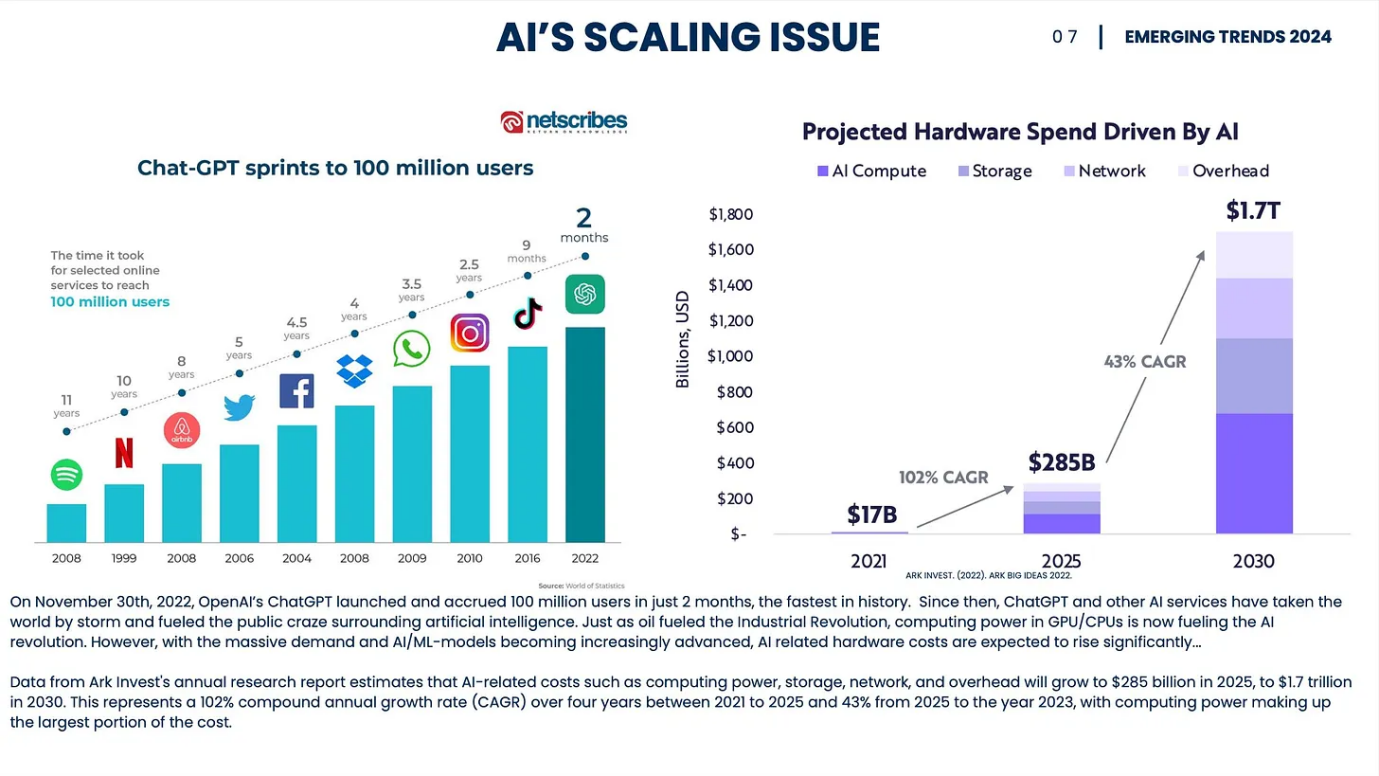
Source: Io.net
In response to this growing demand, Io.net has proposed an innovative solution: to build the world's largest AI computing cloud by leveraging underutilized resources in data centers, cryptocurrency mining farms, and consumer GPUs. This strategy promises to provide almost unlimited computing power at a fraction of the cost using traditional methods, addressing the critical gap between rapidly growing demand for computing resources and limited supply. Io.net's approach not only aims to alleviate the current resource shortage but also supports the continuous development of AI technology, ensuring the ongoing advancement of digital capabilities.
Project Overview
Io.net is dedicated to revolutionizing the cloud computing field through its decentralized GPU network designed specifically for machine learning. By establishing the world's largest AI computing cloud, Io.net provides scalable, accessible, and cost-effective computing power, challenging the limitations of traditional cloud services. Through partnerships with entities such as Filecoin and Render, as well as the upcoming IO token, Io.net enables AI/ML engineers to easily expand their projects within a vast GPU network.
The platform supports critical AI development tasks such as batch inference, parallel training, and reinforcement learning, and has been optimized for Python workloads. With the introduction of the IO token, Io.net is moving towards a fully operational, cost-effective decentralized network. Using DePIN technology, it can meet a wide range of application requirements dependent on GPUs, providing a flexible, user-controllable computing environment. Io.net is setting new standards for decentralized cloud computing, leading the wave of innovation in this field.
Io.net Features
IO Cloud
IO Cloud aims to simplify the deployment and management of decentralized GPU clusters, providing machine learning engineers and developers with a scalable and flexible platform for accessing GPU resources without requiring significant hardware investment. The platform offers a similar experience to traditional cloud services but with the added advantages of a decentralized network.
Highlights:
- Scalability and cost-effectiveness: Committed to becoming the most cost-efficient GPU cloud platform, aiming to reduce AI/ML project costs by up to 90%.
- Integration with IO SDK: Enhances the performance of AI projects through seamless integration, building a unified high-performance environment.
- Global coverage: Distributes GPU resources globally in a manner similar to CDN, optimizing machine learning services and inference.
- Support for RAY framework: Utilizes the RAY distributed computing framework for scalable Python application development.
- Exclusive features: Provides private access to the OpenAI ChatGPT plugin, simplifying the deployment of training clusters.
- Innovative crypto mining: Aims to bring revolutionary innovation to the crypto mining industry by supporting the ML and AI ecosystem.
IO Worker
IO Worker is designed to optimize user supply operations in WebApps, including user account management, real-time activity monitoring, temperature and power tracking, installation support, wallet management, security assessments, and profitability analysis. It bridges the gap between the demand for AI processing power and underutilized computing resource supply, promoting a more economically efficient and seamless AI learning process.
Highlights include:
- Worker dashboard: Provides a real-time monitoring dashboard for connected devices, supporting functions such as device deletion and renaming.
- Device details page: Displays comprehensive analysis of devices, including traffic, connection status, and job history.
- Earnings and rewards page: Tracks earnings and job history, with transaction details available for query on SOLSCAN.
- Add new device page: Simplifies the device connection process, supporting quick and easy integration of new devices. Io.net Architecture and Technology Analysis
IO Browser
The IO Browser is designed as a comprehensive platform to provide users with in-depth insights into the operation of the io.net network, similar to how a blockchain browser provides transparency for blockchain transactions. Its primary goal is to enable users to monitor, analyze, and understand detailed information about the GPU cloud, ensuring complete visibility into network activities, statistical data, and transactions while safeguarding the privacy of sensitive information.
Highlights include:
- Browser homepage: Provides insights into supply volume, verified suppliers, active hardware count, and real-time market pricing.
- Clusters page: Displays public information about deployed clusters in the network, along with real-time metrics and reservation details.
- Device page: Displays public details of devices connected to the network, providing real-time data and transaction tracking.
- Real-time Clusters monitoring: Provides real-time insights into cluster status, health, and performance, ensuring users have access to the latest information.
Io.net Architecture and Technology
IO-SDK: Core Technology Engine
As a branch of Ray, the IO-SDK forms the cornerstone of IO.NET's functionality, supporting task parallel execution and handling multi-language environments. Its high compatibility with mainstream machine learning (ML) frameworks enables IO.NET to flexibly and efficiently meet diverse computing requirements. This technological configuration, coupled with a finely defined technical system, ensures that the IO.NET platform can meet current demands while being adaptable for future development.
Based on this, Io.net adopts a multi-layered architecture design, including:
- User interface layer: Provides visual front-end interfaces for users, including public websites, client areas, and GPU vendor areas, aiming to provide an intuitive and user-friendly experience.
- Security layer: Ensures the integrity and security of the system, integrating mechanisms such as network protection, user authentication, and activity logging.
- API layer: Serves as the communication hub for the website, vendors, and internal management, facilitating data exchange and various operations.
- Backend layer: Forms the core of the system, responsible for handling cluster/GPU management, customer interactions, and automatic scaling tasks.
- Database layer: Responsible for data storage and management, with the main storage handling structured data and caching used for temporary data processing.
- Task layer: Manages asynchronous communication and task execution to ensure efficient data processing and flow.
- Infrastructure layer: Forms the foundation of the system, including GPU resource pools, orchestration tools, and execution/ML task processing, equipped with powerful monitoring solutions.
IO Tunnels Technology
IO Tunnels establishes secure connections from the client to remote servers, allowing engineers to bypass firewalls and NAT without complex configurations for remote access.
Workflow: IO Workers first establish a connection with an intermediary server (i.e., the io.net server). Subsequently, the io.net server listens for connection requests from IO Workers and engineer machines, facilitating data exchange through reverse tunneling technology.
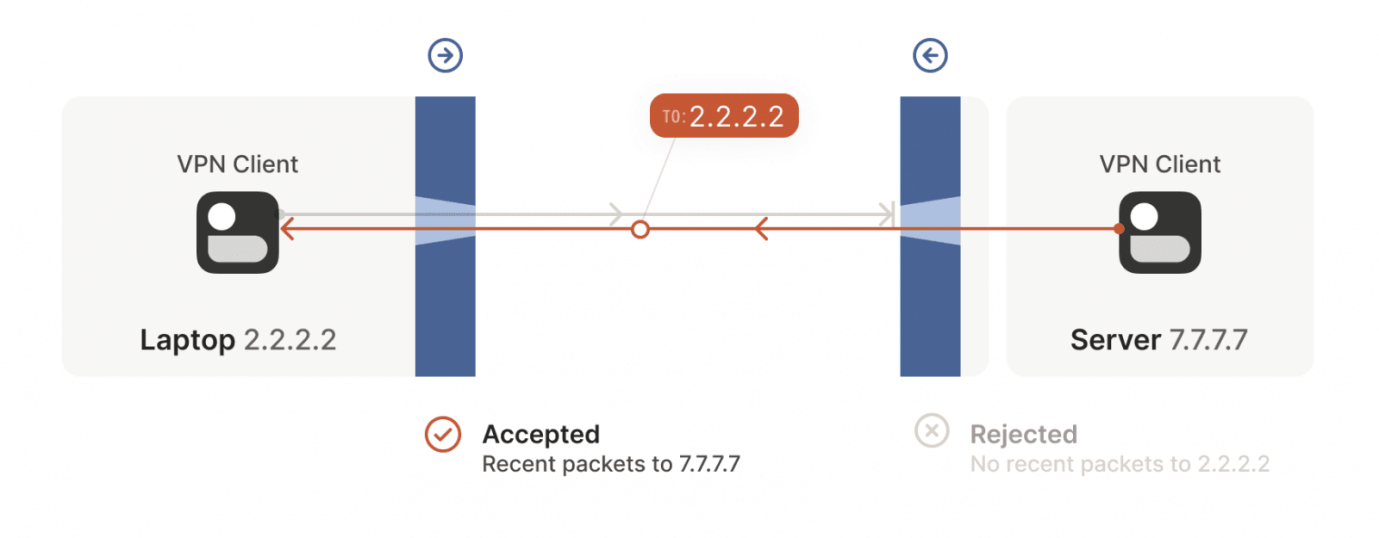
Source: Io.net
Applications in io.net:
- Through the io.net server, engineers can easily connect to IO Workers without facing the challenges of network configuration, enabling remote access and management.
Advantages:
- Accessibility: Direct connection to IO Workers eliminates network barriers.
- Security: Ensures secure communication and protects data privacy.
- Scalability and Flexibility: Efficiently manages multiple IO Workers in different environments.
IO Network:
IO Network utilizes a mesh VPN architecture to provide ultra-low latency communication between antMiner nodes.
Mesh VPN network features:
- Decentralized connectivity: Compared to traditional hub-and-spoke models, mesh VPN enables direct connections between nodes, enhancing redundancy, fault tolerance, and load distribution through multipath data transmission.
- Advantages: Strong resistance to node failures, good scalability, reduced latency, and optimized traffic distribution.
Benefits for io.net:
- Reduced communication latency through direct connections, enhancing application performance.
- No single point of failure, ensuring network continuity even in the event of a single node failure.
- Enhanced user privacy protection by increasing the difficulty of data tracking and analysis.
- Simplified addition of new nodes without impacting network performance.
- Facilitates resource sharing and efficient processing between nodes.
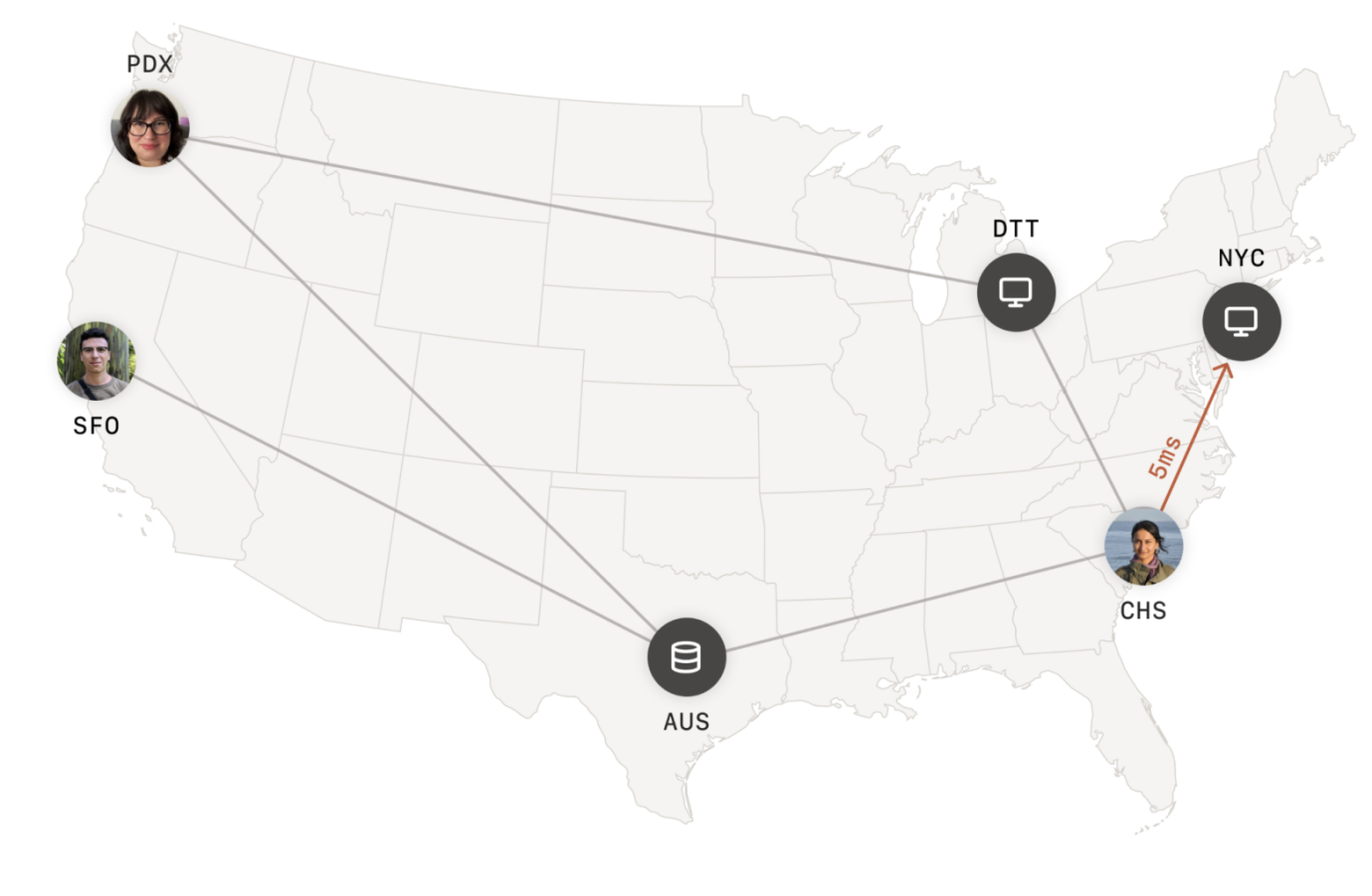
Source: Io.net
Token Economics Overview
The $IO token is expected to be released in the second quarter of 2024 as the native cryptocurrency and protocol token of io.net, aiming to serve AI startups, developers, and GPU suppliers within the IO ecosystem. It will provide a range of functionalities to simplify payment processes, reward contributions, and facilitate efficient transactions for computing tasks.
For AI startups and developers:
- Cluster payments: $IO token simplifies cluster deployment and payment processes for computing tasks.
- Model inference gateway: Each model inference requires microtransactions through $IO token.
- IOSD points: A utility token pegged to the US dollar, generated through burning $IO tokens, used for network transaction fees.
For suppliers:
- GPU rewards: Provides rewards for GPU contributions, including payment for rental time and incentives for hosting model inference during idle time on the network.
Io.net adopts a dual-token system with $IO and IOSD pegged to the US dollar, ensuring stable transaction costs. The generation of IOSD through burning $IO tokens is controlled through net emission control to maintain supply balance.
Token economics and governance:
- Burning and minting economics: Burning $IO generates $IOSD, maintaining the monthly static supply of $IO, adjusted based on network usage.
- Net emission mechanism: Adjusts the minting of $IO tokens based on IOSD burning, enabling the protocol to continuously provide $IO rewards.
- Governance mechanism: $IO token serves as a governance token, allowing holders to influence critical network decisions through staking, covering aspects such as fee settings and the introduction of new features.
Overview of goals and design principles:
- io.net aims to connect global GPU resources, supporting computing tasks for artificial intelligence (AI) and machine learning (ML) through native asset incentive mechanisms to drive network growth and balance.
- Distributes rewards to GPU suppliers and provides loyalty points for AI engineers' continued activity on the network.
- Allows token holders to vote on critical network decisions, advancing the implementation of decentralized governance structures.
- Enables $IO token holders to stake investments with node operators or users to receive their reward shares.
- The network will initially levy a 5% fee, which will be used for $IO token burning activities or providing USD incentives, aiming to promote network expansion and enhance user participation.
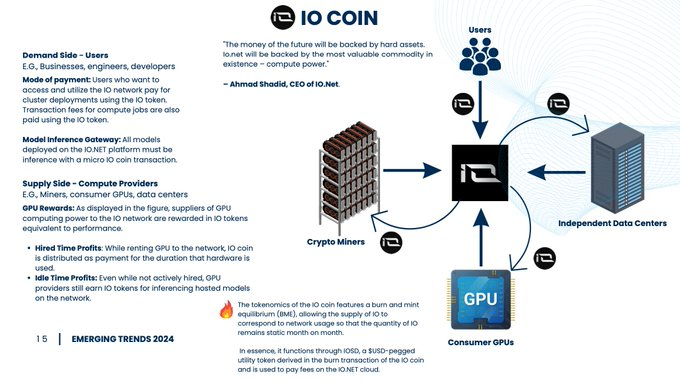
Competitive Analysis
In the Web3 space, numerous application marketplaces for computing have emerged, including notable ones such as Akash, Render, Nosana, Clore.ai, Inferx, Aioz, Fluence Labs, and GPU.NET, among others. Despite fierce market competition, Io.net has quickly gained significant attention in the industry, with a valuation reaching $1 billion, following its $30 million funding round in Series A from prominent institutions such as Hack VC, Solana Labs, and cryptocurrency exchange platform OKX. In the DePIN field, Io.net stands out with its leading cluster technology. This innovative feature allows Io.net to unite multiple computers into a powerful supercomputer, making it the only service currently capable of building decentralized clusters on a large scale, providing a critical advantage for the development of complex AI solutions.
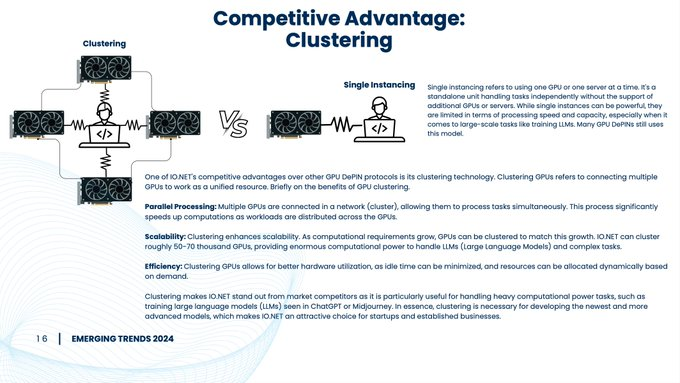 Source: Suyo on X
Source: Suyo on X
In 2023, Io.net received significant recognition at the Inventions Asia Awards, standing out from over 110 projects in Asia. Since the beginning of 2024, Io.net has shown significant growth and engagement, with a waiting list of over 100,000 GPUs, providing over 14,000 hours of computing services. The network has registered over 20,000 GPUs and successfully built over 650 clusters (source).
It is worth noting that platforms like Io.net and Akash are dedicated to reforming traditional cloud computing in a decentralized manner, with each focusing on different industry segments. Akash Network provides a broad cloud resource marketplace using container technology, while Io.net focuses on providing high-performance GPU computing services for AI and machine learning, with unique cluster functionality.
Additionally, the Render Network Foundation has committed to allocating 300K RNDR from its total of 1.14M RNDR to new GPU node operators, with Io.net as the first partner (source).
Bullish Factors
- Io.net has established strong partnerships with Render Network and Solana, the latter being an ideal choice for the DePIN project due to its high throughput and low fees, as highlighted in the Messari 2024 report. It has also collaborated with Filecoin to open new revenue streams for decentralized storage providers while enhancing AI applications. Prior to this collaboration, Io.net received hardware donations from 1,500 Filecoin members.
- The team includes Harvard alumni, Angela Yi, co-founder of a Filecoin project advisory firm, and Tory Green, Chief Operating Officer with over 20 years of venture capital and executive experience.
- Io.net is poised to become a significant force in the DePIN field and is considered one of the most anticipated project launches in the first quarter.
- It is the only project capable of aggregating GPU resources from around the world into a unified distributed cluster, providing instant access services to users.
- As the value of computing resources continues to increase, Io.net aims to reduce the cost of leasing GPU/CPU capacity, crucial for the scalability of AI and ML. The growth rate of computing demand exceeds the growth rate of supply, indicating an increasingly widening gap between demand and supply.
- By 2030, the demand for computing resources, especially for model training, is expected to become a significant market, potentially accounting for 1% of the US GDP.
Bearish Factors
- The decentralized computing market is becoming increasingly competitive, with mature projects like Akash Network and emerging projects continuously entering the market. Intense competition may affect Io.net's ability to retain users.
- There are significant technical challenges in the large-scale creation and management of decentralized clusters.
- While interest in decentralized computing solutions continues to grow, widespread adoption is still in its early stages. Slower-than-expected adoption by AI startups, developers, and GPU suppliers may limit growth.
- Regulatory changes in cryptocurrency and decentralized networks, as well as the use of the $IOSD stablecoin, may attract regulatory scrutiny.
- The dual-token system involving $IO and $IOSD may be too complex for users.
Conclusion
Io.net is poised to shine in the promising AI computing market, backed not only by a skilled technical team but also by strong support from prominent entities such as Multicoin Capital, Solana Ventures, OKX Ventures, Aptos Labs, and Delphi Digital. Given the current situation and its upcoming token issuance, we believe this is a project worth closely monitoring, but we always remind investors to proceed with caution.
免责声明:本文章仅代表作者个人观点,不代表本平台的立场和观点。本文章仅供信息分享,不构成对任何人的任何投资建议。用户与作者之间的任何争议,与本平台无关。如网页中刊载的文章或图片涉及侵权,请提供相关的权利证明和身份证明发送邮件到support@aicoin.com,本平台相关工作人员将会进行核查。




